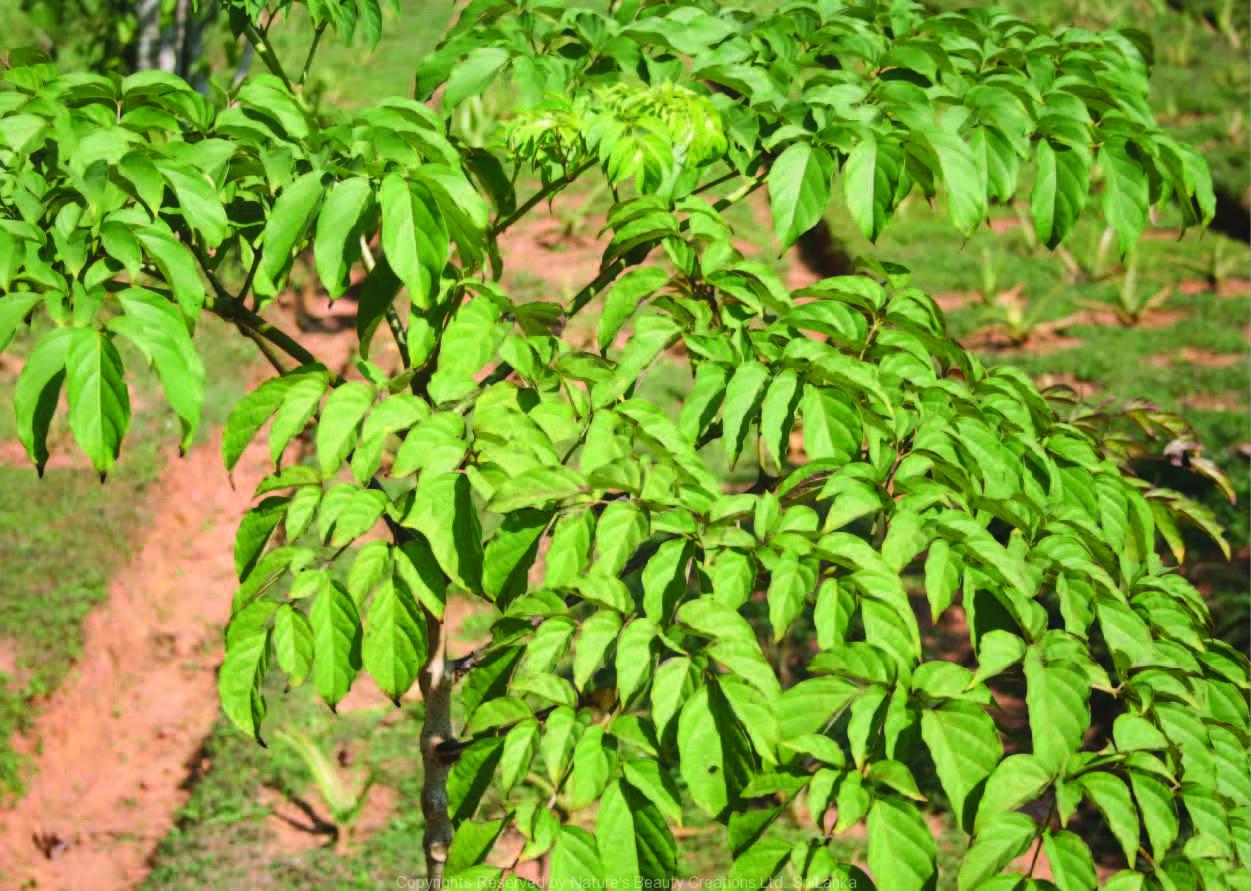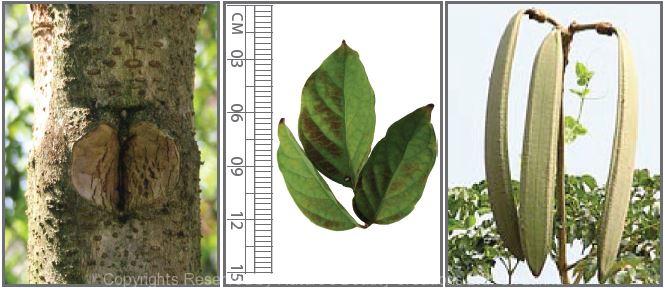

Traditional Knowledge
Useful plant parts :
Root, root bark and seed
Uses in traditional medicine :
- Root bark is an ingredient of ‘Dashamula’ a well known Ayurvedic formulation
- Decoction of the root is an astringent, and is used in diarrhoea, dysentery, rheumatism and piles
- Seeds possess purgative properties
Scientific Research
Chemical constituents:
Flavonoids and flavonoid glucosides: baicalein and its derivatives, chrysin, scutellarein, luteolin derivatives, oroxin A and B, quercetin, apigenin, kaempferol, lupeol and its derivatives, stilbenoid: pinosylvin and its derivatives, alcohols: rengyol, isorengyol, alkaloid: zarzissine and cholosterol, sitosterol, daycosterol from stem bark and seeds
Bioactivity :
Extracts of stem bark and root: antibacterial, antifungal, anti-inflammatory, anticancer, antiarthritic; methanol extract of leaf, bark and stem: antioxidative
Clinical:
Ingrediant of the herbomineral formulation ”Mentat” that is used to treat mentally subnormal children
References : Ali, R. M. et al., (1998), Antimicrobial and antiinflammatory activities of extracts and constituents of Oroxylum indicum (L.) Vent, Phytomedicine, 5(5), 375–381. Dinda, B. et al., (2007), Flavonoids from the Stem-bark of Oroxylum indicum, Natural Product Sciences, 13(3), 190-194. Karnati, M. et al., (2013), Anti-arthritic activity of root bark of Oroxylum indicum (L.) vent against adjuvant-induced arthritis, Pharmacognosy Res, 5(2), 121-8. Lotufo, L. V. C. et al., (2005), Studies of the anticancer potential of plants used in Bangladeshi folk medicine, J Ethnopharmacol, 99(1), 21-30. Mishra, S. L. et al., (2010), In vitro Antioxidant Potential of Different Parts of Oroxylum indicum: A Comparative Study, Indian J Pharm Sci, 72(2), 267-9. Moirangthem, D. S. et al., (2013), Differential effects of Oroxylum indicum bark extracts: antioxidant, antimicrobial, cytotoxic and apoptotic study, Cytotechnology, 65(1), 83-95. Singh, A. V. and Chaudhary, A. K., (2011), A Review on theTaxonomy, Ethnobotany, Chemistry and Pharmacology of Oroxylum indicum Vent, Indian J Pharm Sci, 73(5), 483–490. Trivedi, B.T., (1999), A Clinical Trial on Mentat, Probe, 4, 226. Wei, X. N. et al., (2013), Chemical constitunents of seeds of Oroxylum indicum, Zhongguo Zhong Yao Za Zhi, 38(2), 204-7. Yan, R. Y. et al., (2011), Antioxidant flavonoids from the seed of Oroxylum indicum, Fitoterapia, 82(6), 841-8.
Copyrights Reserved By
Natures Beauty Creations




